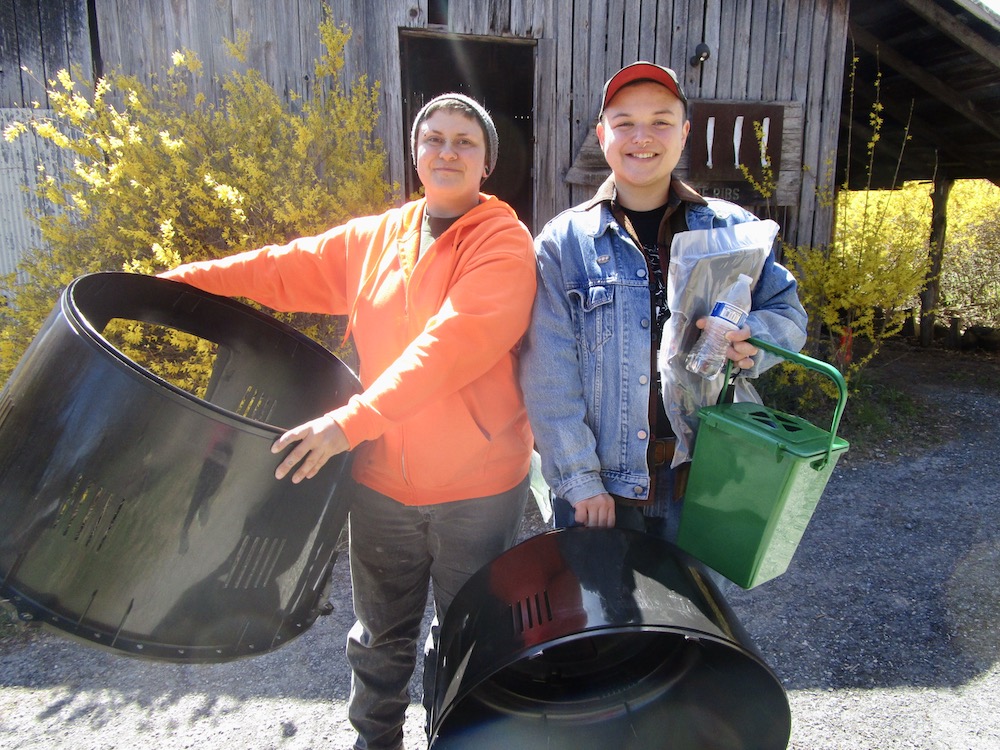
In last week’s blog post we provided some links to our composting and landfill FAQs, as well as compost expert Phyllis Fevrier’s contact information. This week I want to offer reassurances that, regardless of questions you may have, you’re doing it right! Below is some quick guidance to help you along in your project.
The list below includes foods you can and cannot compost. The list also provides examples of “greens” and “browns” for households trying to maintain a 1:3 green to brown ratio in which every load of green material gets counterbalanced by three times as much brown material.
The green-brown mix helps ensure you end up with great compost. While you do not have to maintain this ratio, without a good level of browns – which are rich in carbon and help your pile maintain an airy structure – your green, nitrogen-heavy pile may run the risk of smelling funky and feeling slimy. It also might take longer to break down.
What foods can go in the compost? AKA, what can you put in your green collecting pail?
- Fruit and vegetable scraps, raw OR cooked including any skins, peels, rinds, or hulls
- Coffee grounds and used teabags
- Raw or cooked grains like pasta, bread, and cereal
- Eggshells
What Foods Should NOT be Composted?
- Meat and bones and fish
- Cooking fats and oils
- I’d go light on any dairy products
What’s a “green”?
- The food scraps from your kitchen pail (the only thing you are weighing)
- Fresh grass clippings
- Fresh weeds or plants pulled from your yard (be wary of adding weeds gone to seed or diseased plants to your pile if you intend to use the compost for your garden.)
- Manure from herbivorous animals (chickens, rabbits, etc.)
What’s a “brown”?
- Dry grass and leaves, straw
- Twigs, chipped wood, or sawdust
- Paper (plain cardboard, newspapers, notebook paper, most papers will do, but rip it up some)
In addition to keeping a 1:3 green to brown ratio, if you want to help your compost maintain a good, even, airy structure you can aerate it periodically. All this means is that you can unscrew the lid from your earth machine, put in a pitchfork or stick inside, and rock ir back and forth. Rocking rather than actively turning or stirring the compost adds air to the mixture, which stimulates the good bacteria that break down the food scraps, without disturbing the layers of decaying matter. This way, when you eventually open the door at the bottom of the bin ready to scoop out your finished compost you won’t find any eggshells or potato peels.
Do you have to aerate your compost? No. But it will help your scraps to break down faster. In fact you don’t need to follow any of these tips. As you recall the main purpose of this challenge is to keep food waste out of the landfill. If you are doing that, you’re doing great. Next week we’ll take a closer look at the wide range of household totals, sharing intel from some of our distinguished lightweights and heavyweights. Stay tuned!
